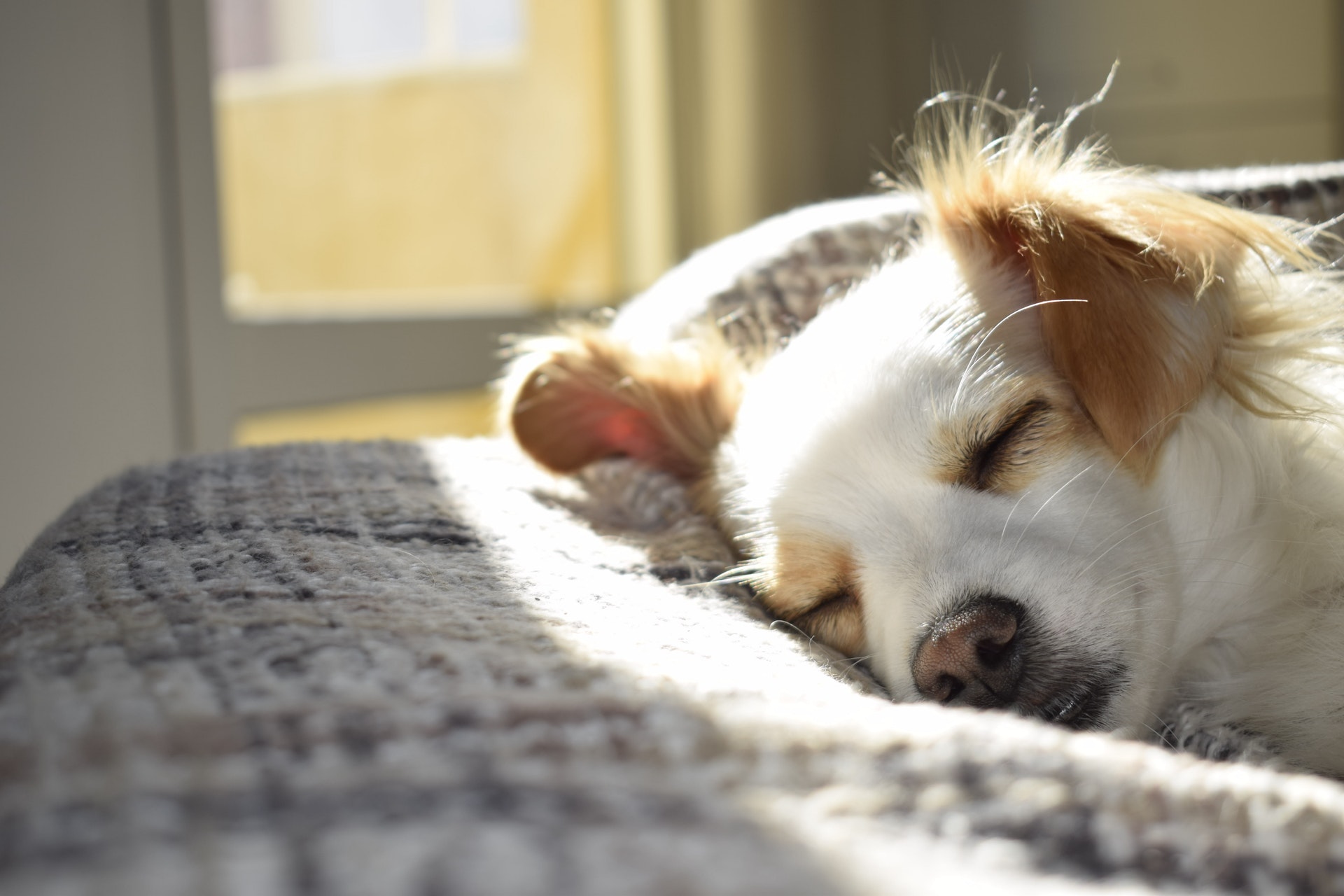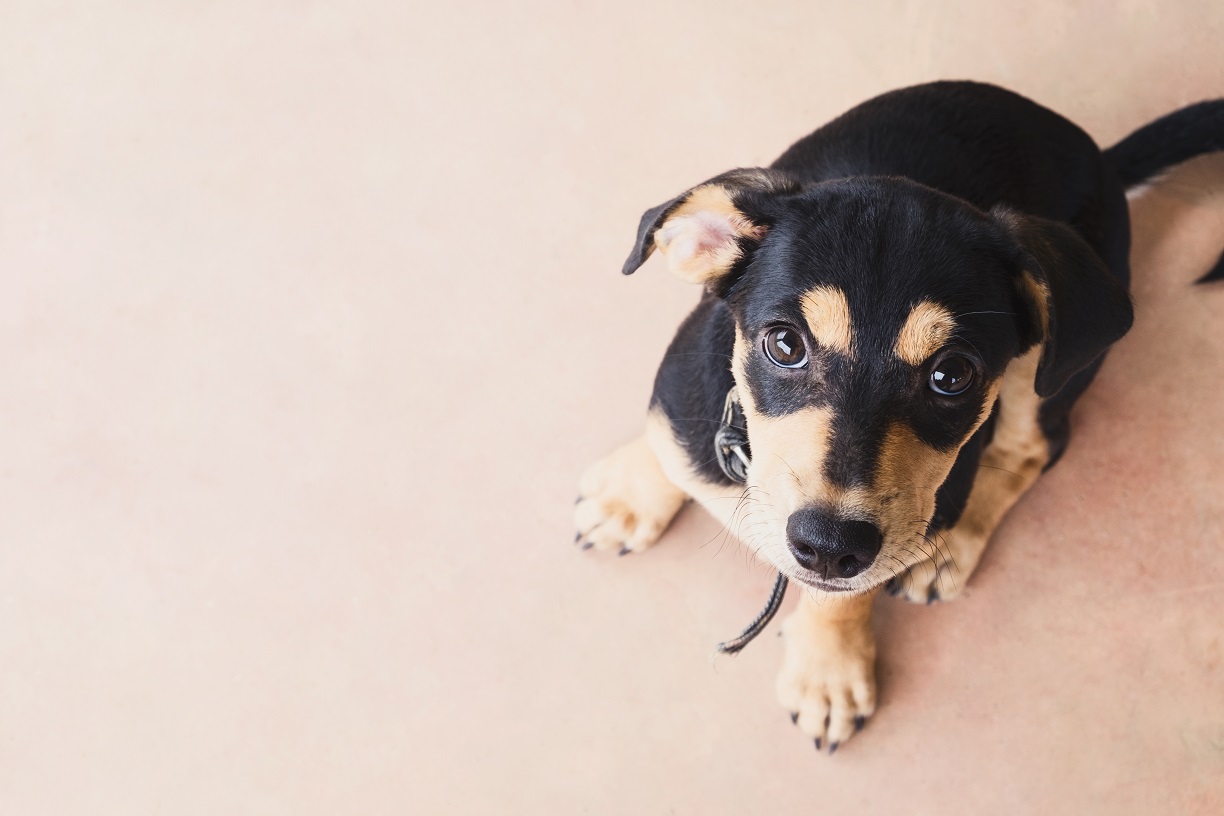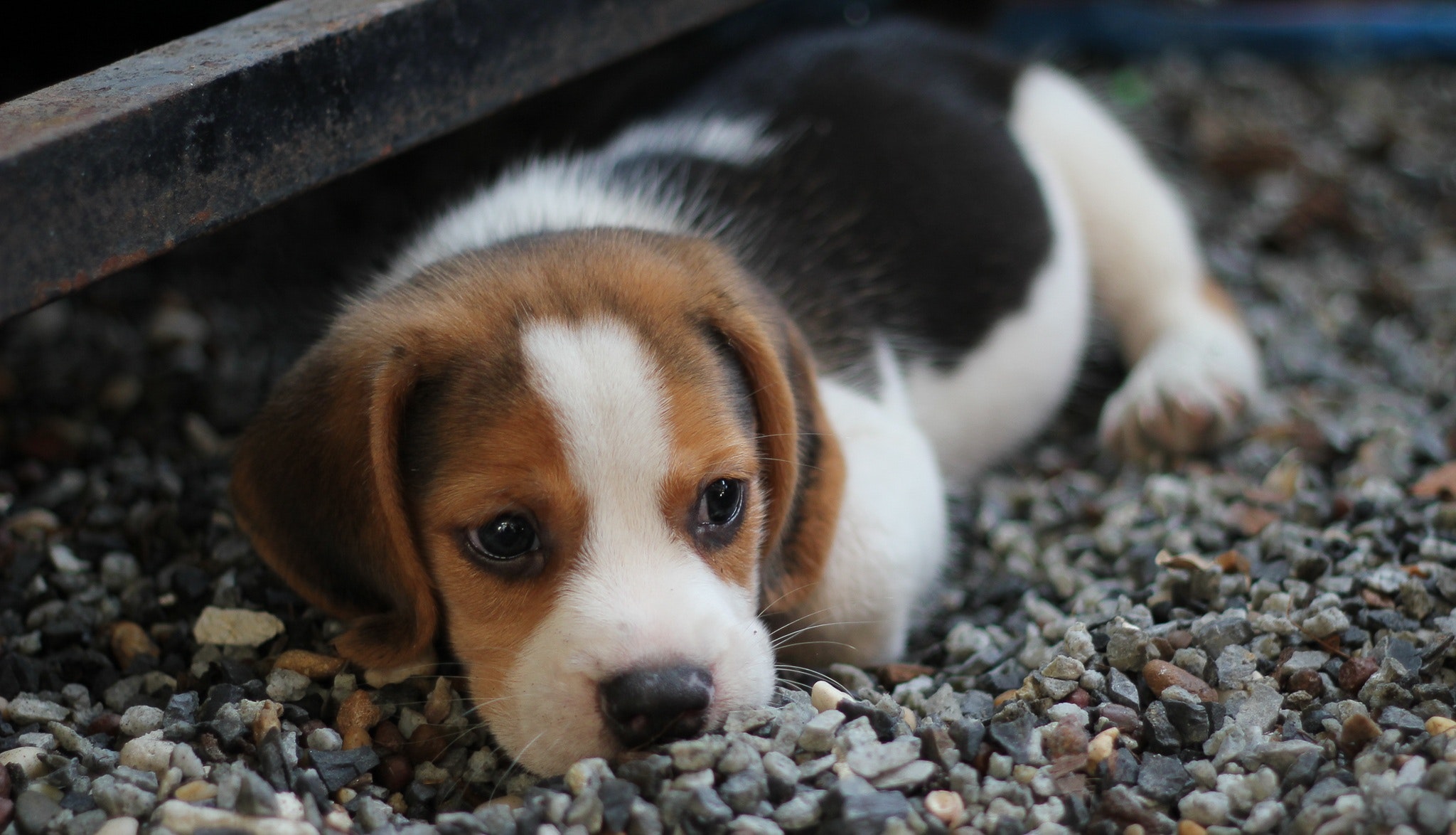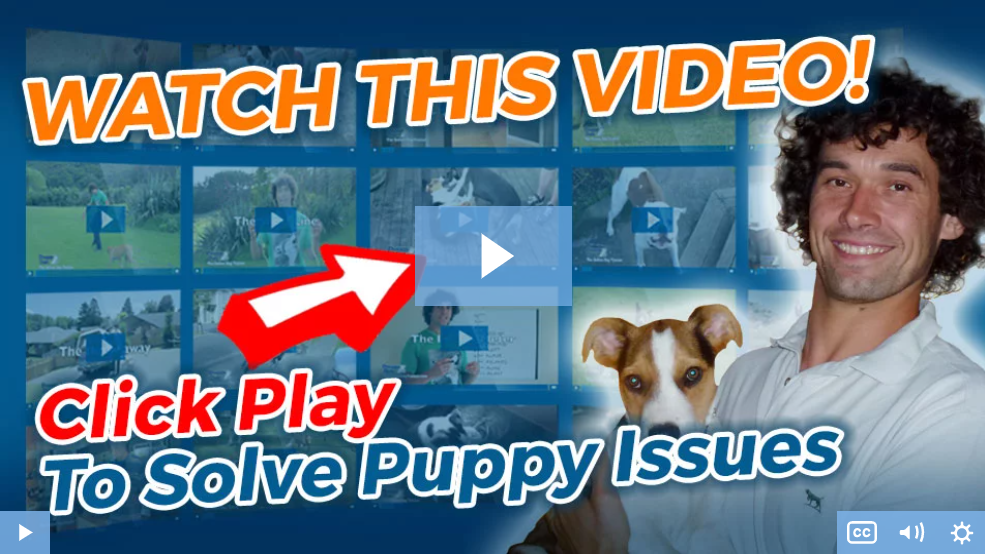If you’re thinking about crate training a new puppy then congratulations, you’ve made a wise choice as crate training comes with a huge range of benefits.
From teaching your puppy bladder control, keeping them away from danger when you’re not around, and ultimately giving them a safe haven to relax and unwind are just a few of the obvious benefits that come with crating your pup.
But here’s the thing…
Crate training a new puppy often comes with its fair share of challenges. Because while some puppies will take to their new crate like ducks to water, others can often see it as a big scary metal prison from which there is no escape.
And if you’re dealing with the latter, then this is going to create a few teething issues when it comes to getting your puppy fully up to speed.
However, to every problem there comes a solution. And by implementing the right training techniques and applying a little calm to soothe your puppy’s fears, it’s by no means impossible to get your puppy to love the crate in time.
So how do you accomplish this?
Well, the key to any training issues you might face can almost always be solved by first teaching your puppy how to remain calm and in control of their emotions.
And this is why before you do anything else, I’d highly recommend taking a few minutes to watch the short video below from Dan Abdelnoor (aka Doggy Dan) over at The Online Dog Trainer.
Not only does Dan discuss why emotional control is the key to solving ALL of your crate training issues. He also talks about how to make this a reality by applying a few simple, yet highly effective calming techniques taught in his Puppy Coach Program.
So watch the video, apply the training Dan recommends, and you’ll find your puppy training problems will soon become a thing of the past.
Here’s the link to take a look: Click Here To Discover How To Finally Solve All Of Your Puppy’s Crate Training Problems While Setting A Solid Foundation For Your Pups Future… Even If You’ve Tried & Failed Before!
(video will open in a new window)
Why Crate Train Early?
Well, much like a baby, a new puppy’s mind is like a sponge. The earlier you start teaching, the more your puppy is going to be able to take on board.
It’s simple but it’s very surprising how many puppy owners fail to realize this.
They say to themselves. “Let’s wait till he’s a little older, then he’ll be ready”.
This is just plain bad thinking. The longer you wait the harder it’s gonna be.
Obviously, you’re not going to rip the poor puppy straight from his mother, throw him into the crate and expect miracles.
But by the time your new puppy hits anywhere from 8 to 10 weeks old, It’s probably time to start getting stuck in.
Where Should I Put The Crate?
Great question, and honestly, you should put the crate wherever your puppy feels most comfortable.
Provided it is…
- Away from any cold spots in your house
- Out of reach of direct sunlight
- And somewhere your new puppy will feel safe.
I strongly recommend that during the first few weeks of crating your new pup that you have them as close by as possible.
The bedroom is a highly recommended option and will in most cases is both the safest and best option for helping your new puppy feel comfortable in his new environment.
What many owners do (myself included) is have 2 crates in the home.
One crate in the bedroom to stop your puppy feeling lonely, and another in a safe and cozy spot out of the way.
The latter is great for your puppy if they are stressed, tired, or just really want some alone time to chill and relax.


Benefits Of Crate Training A New Puppy
There’s plenty of reasons you should definitely start crate training your new puppy.
But for the sake of your sanity, I’ll just outline a few of my personal favorites.
Bladder Control
Firstly, dogs and puppies don’t go to the bathroom where they sleep.
At least not on purpose anyway.
This is great news from not only a crate training point of view but also a potty training point of view.
Essentially what your doing here is killing 2 birds with one stone.
Not only are you familiarizing your puppy with their crate…
…But you’re also teaching them to control their bladder which will speed up the potty training process.
Now, obviously, don’t take this as a message to leave your puppy in his crate solely for the purpose of teaching bladder control.
This would be unwise as accidents in the crate can often lead to a negative association with the crate which is the exact opposite of what you want to achieve here.
Keeping Your Home Intact
And let’s face it. Puppies can be mischievous little critters, especially at a young age.
I don’t know about you but when I leave the house for the evening I’d rather be safe in the knowledge that my puppy doesn’t have free wander of the house to run, scratch, chew as he pleases.
I’ve seen enough chewed shoes over the years to know that it’s better safe than sorry.
A Great Place To Relax
Maybe it’s just me but I like time to myself to relax and unwind every so often.
Whether it’s taking a quick nap chilling out watching tv or just mellowing out to a little music. Everyone needs their own way of destressing.
Puppies are no different.
The crate should be their ultimate chill zone, and once trained, your puppy will happily wander in after a long day and simply enjoy that little bit of time he gets to himself.
It will keep him happy, you happy and in time, help him grow into a well-behaved, well-trained puppy.
Car Journeys Are Safer
Taking your dog in the car is a hell of a lot safe when you can strap them in properly.
And although you can’t physically site your pup down and strap him in, this is gonna be the next best option.
It might look cool driving down the freeway with his nose poking through a slightly open window.
But in reality, you really shouldn’t be putting your puppy in jeopardy like that.
(video will open in new window)
How Not To Crate Train A New Puppy
Crate training a new puppy incorrectly can make your puppy’s crate feel more like a prison than a place of comfort.
So with that said, here are the mistakes you need to avoid like the plague of you wanna see any kind of progress with your pup.
Don’t Use The Crate For Punishment
It goes without saying that if you lock your puppy in his crate every time he’s bad, he’ll instantly start associating his crate with negativity.
And BOOM! you’ve just lost the game.
It can take weeks, even months to turn this kind of negative association around.
And not to mention, you’re puppy will end up resenting you for it which can lead to all sort of behavioral problems including depression, aggression, and even separation anxiety
They will also start to fear the crate much like an inmate when he’s being forced into solitary confinement.
Don’t Crate For Too Long
This is particularly true for a puppy.
Young little pups simple don’t have the patience of an older more mature dog.
Hell, most puppies have a tough enough time staying in one place for even a second, so getting them to sit still for up to an hour or more is really gonna test them.
Don’t crate your puppy for any more than 90 minutes when you’re first getting started.
It’s simply too much for them to handle in one go.
Avoid Accidents
Now I know it’s already been mentioned but I can’t stress enough just how important it is.
Toileting in the crate will create bad vibes.
I mean if you soiled your bedsheets you’d have a pretty tough time feeling completely comfortable in your bed again, wouldn’t you?
The same thing applies.
Accidents happen I know but you really need to keep a close eye on this.
Especially in the first few weeks.


Crate Training A New Puppy – The Quick & Easy Way
Introducing your puppy to his new crate should be a fun experience. So make sure this happens when both you and your puppy are in a positive mood.
Create a comfortable, welcoming environment using some of your pups favorite things such as a blanket, toys or anything else that they’ve grown fond of over the previous weeks.
Make sure you keep the door to the crate completely open during your puppies first encounter. Securing it in place so it doesn’t unintentionally move and possibly frighten your puppy away.
The first impression is everything and getting this step right will save you tons of time as you move through the next steps.
When To Close The Gate
Ideally, you want to wait at least a few days before you even think about closing the gate.
Familiarization is a crucial step in the crate training process. Your puppy needs to feel both safe and relaxed at all times whenever he’s in his crate.
At the very least he should be eating and sleeping without too much bother and should feel at ease even when you leave the room.
Once your puppy starts showing these signs then you can think about closing the gate.
Remember to start slow.
Don’t close the gate all the way as this can often frighten your puppy and undo all the hard work you’ve both put in.
Instead, close the gate only slightly while watching your puppy closely to see how he reacts.
Continue to move the door a few inches closer every few minutes while continuing to monitor his reaction.
If all seems fine then you can go ahead and close the gate.
If not leave the gate in a position where your puppy feels comfortable and try again tomorrow.
Continue this step every day until your puppy is happy to be in his crate with the gate fully closed.
Increasing Time In The Crate
Once your puppy’s happy with the gate closed it’s simply a matter of time until your new puppy starts spending more and more time in his crate.
Here’s what you need to do…
- Make sure your puppy is fully exercised and tired before retreating to his crate. A tired puppy is less likely to become stressed or anxious resulting in more uninterrupted time in the crate.
- Double-check your puppy goes potty before being crated. There’s nothing worse than needing to when you’re in a confined space.
- Don’t use the crate for punishment. Your puppy will begin to associate his crate as a negative place which will make him resent it, and possibly you.
- Fill the crate with all your puppy’s favorite things such as toys, blankets, and maybe even a few treats.


Final Thoughts
So there you have it, the ultimate guide to crate training a new puppy.
Make sure you try out each and every one of these techniques and let me know what you think.
And if you haven’t done so already, make sure you take a few minutes to check out the Puppy Coach Program. I guarantee that if you watch, but more importantly, implement the training Dan reveals in this unique program, you’re going to see great changes in your puppy that will last a lifetime.
Do you have any more ideas on crate training a new puppy? Let me know in the comments below…

